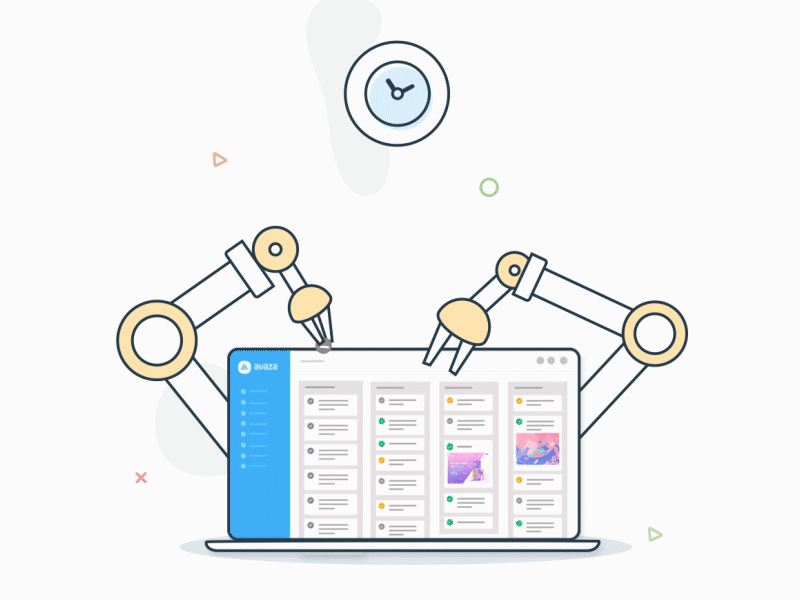How to Automate IT Tasks Like a Pro: Boost Efficiency and Save Hours Every Week

Introduction: The Power of Automation in IT
Imagine a world where your IT tasks practically take care of themselves. No more late nights manually configuring servers, no more tedious backups, and no more repetitive tasks sucking the life out of your day. Welcome to the world of IT automation—a realm where efficiency meets intelligence, and where your time is finally yours to command.
In this post, we’ll dive into the why and how of automating IT tasks. We’ll explore the tools that make automation accessible, the scripts that will change your workflow forever, and the mindset you need to adopt to become an automation master. Whether you’re new to the idea or a seasoned pro looking to refine your skills, this guide is for you.
Why Automate? The Benefits You Can’t Ignore
1. Time Savings
The most obvious benefit of automation is time savings. By automating routine tasks, you free up hours each week that can be spent on more important, strategic work. Imagine being able to focus on that big project or finally having time to innovate, all because your daily tasks are being handled automatically.
2. Consistency and Accuracy
Humans make mistakes—it’s a fact. Automation ensures that tasks are performed the same way every time, reducing the risk of errors. This consistency is crucial for tasks like backups, updates, and deployments, where a single mistake can lead to significant issues.
3. Scalability
As your business grows, so do the demands on your IT infrastructure. Automation allows you to scale your operations without exponentially increasing your workload. With the right tools in place, what once required an entire team can be managed by a single person (or even less).
4. Cost Efficiency
Time is money, and by saving time, you’re also saving money. Automation can reduce the need for additional staff, lower the risk of costly errors, and even decrease the need for overtime.
Getting Started: The Tools You Need
1. Ansible: The DevOps Darling
Ansible is a powerful automation tool that can manage configurations, deployments, and more across multiple systems. Its simple, agentless architecture makes it accessible even to those new to automation. With Ansible, you can write “playbooks” that describe your desired state, and the tool will ensure your systems match that state.
Example Ansible playbook to install NGINX:
- hosts: servers
become: yes
tasks:
- name: Install NGINX
apt:
name: nginx
state: present
2. Python: The Swiss Army Knife of Automation
Python is a versatile programming language that’s perfect for writing scripts to automate tasks. From file management to network operations, Python’s extensive libraries make it a go-to for sysadmins looking to automate.
Example Python script to back up a directory:
import os
import shutil
import datetime
def backup_directory(source_dir, backup_dir):
current_time = datetime.datetime.now().strftime('%Y-%m-%d_%H-%M-%S')
backup_path = os.path.join(backup_dir, f"backup_{current_time}")
shutil.copytree(source_dir, backup_path)
print(f"Backup completed: {backup_path}")
backup_directory('/path/to/source', '/path/to/backup')
3. Bash: The Command Line’s Best Friend
Bash scripting is a staple for any sysadmin. If you spend time in the command line, learning to automate with Bash is a must. From simple tasks like moving files to complex operations like system monitoring, Bash has you covered.
Example Bash script to monitor disk usage:
#!/bin/bash
THRESHOLD=80
df -H | grep -vE '^Filesystem|tmpfs|cdrom' | awk '{ print $5 " " $1 }' | while read output;
do
usep=$(echo $output | awk '{ print $1}' | cut -d'%' -f1 )
partition=$(echo $output | awk '{ print $2 }' )
if [ $usep -ge $THRESHOLD ]; then
echo "Running out of space \"$partition ($usep%)\" on $(hostname) as on $(date)"
fi
done
Advanced Automation Techniques
1. Event-Driven Automation
Imagine your scripts responding to events in real-time. With event-driven automation, you can set up triggers that automatically run scripts based on specific conditions. For example, you could automate the scaling of your servers when traffic spikes or initiate backups when a file is modified.
2. Infrastructure as Code (IaC)
IaC is the practice of managing and provisioning computing infrastructure through machine-readable files rather than physical hardware configuration. Tools like Terraform allow you to define your infrastructure in code, enabling automated, consistent, and repeatable setups.
3. Continuous Integration/Continuous Deployment (CI/CD)
Automation plays a crucial role in CI/CD pipelines, where code changes are automatically tested, integrated, and deployed. By automating these processes, you can ensure that your deployments are fast, reliable, and error-free.
Best Practices for Automation
1. Start Small
Don’t try to automate everything at once. Start with simple tasks and gradually build up your automation skills. As you become more comfortable, you can take on more complex automation projects.
2. Document Everything
Documentation is key to successful automation. Keep detailed records of what your scripts do, how they work, and any dependencies they have. This will save you time and headaches down the line.
3. Test Rigorously
Automation can be powerful, but it’s not foolproof. Always test your scripts and automation setups in a safe environment before deploying them in production.
4. Monitor and Maintain
Automation is not a “set it and forget it” solution. Regularly monitor your automated tasks to ensure they’re running as expected, and be prepared to make updates as your environment changes.
Conclusion: Automate Your Way to Success
Automation is more than just a buzzword—it’s a powerful tool that can transform the way you work. By automating routine IT tasks, you can save time, reduce errors, and free up resources for more important projects. Whether you’re just starting out or looking to refine your automation skills, the tools and techniques covered in this post will help you take your IT operations to the next level.
So why wait? Start automating today and see the difference it can make in your work and your life.